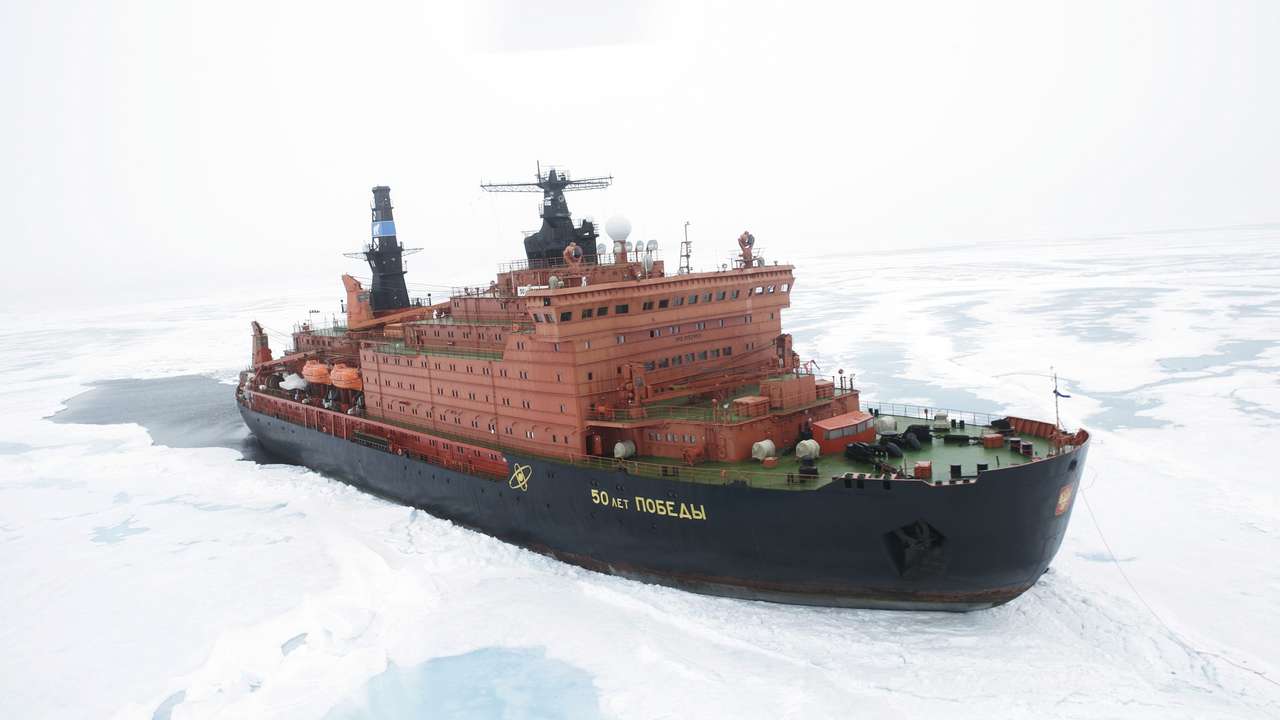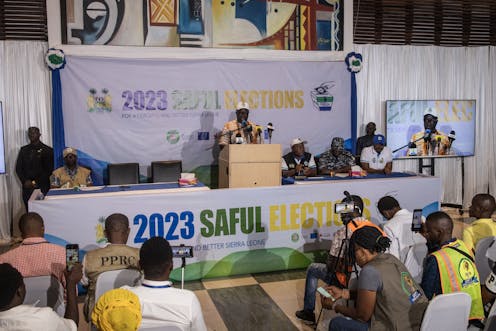Analyzing The Contribution Of European Shipyards To Russia's Arctic Gas Industry

Table of Contents
Specialized Vessels for Arctic Conditions: A European Expertise
The harsh Arctic environment demands specialized vessels with unique design and technological capabilities. European shipyards, renowned for their expertise in shipbuilding technology, have played a crucial role in providing the necessary fleet for Arctic gas extraction.
Icebreakers and their crucial role:
Icebreakers are indispensable for navigating the ice-covered waters of the Arctic. Their design requires advanced engineering solutions to withstand immense ice pressure. European shipyards have been instrumental in building both nuclear and diesel-electric icebreakers, incorporating cutting-edge technologies to enhance their performance and efficiency.
- Nuclear Icebreakers: These powerful vessels, capable of breaking through even the thickest ice, are crucial for year-round navigation in the Arctic. Russia operates a significant fleet of nuclear icebreakers, some of which were built or had significant contributions from European companies.
- Diesel-Electric Icebreakers: These icebreakers offer a balance between power and cost-effectiveness, making them suitable for various Arctic operations. European shipyards contribute to their construction with specialized ice-class hulls and powerful propulsion systems.
- Key European shipyards involved: While direct involvement may be masked by various subcontractors, major European players have contributed to technological advancements and component supply for Russian icebreakers.
LNG Carriers and Support Vessels:
The transportation of liquefied natural gas (LNG) from Arctic extraction sites requires specialized LNG carriers designed for Arctic operation. These vessels must withstand extreme cold, ice floes, and challenging navigational conditions. Furthermore, a complex network of support vessels is necessary for efficient operation, including supply ships, platform support vessels, and rescue vessels.
- Types of LNG Carriers: Arctic LNG carriers feature reinforced hulls, advanced ice-breaking capabilities, and specialized cargo handling systems.
- Specifications for Arctic Operation: These vessels require high ice classes, advanced navigation systems, and robust safety features to mitigate the risks associated with Arctic operations.
- Examples of support vessels: Specialized supply ships, platform support vessels (PSVs), and anchor handling tug supply (AHTS) vessels are crucial for supporting offshore operations in the Arctic.
- Key European shipyards involved: Several European shipyards have either directly built or contributed substantially to the construction of LNG carriers and support vessels operating in the Russian Arctic.
Economic and Geopolitical Implications of European Shipyard Involvement
The involvement of European shipyards in Russia's Arctic gas projects carries significant economic and geopolitical implications.
Economic benefits for European shipyards:
Contracts for Arctic-related vessels provide substantial economic benefits for European shipyards and their supporting industries.
- Job creation: These large-scale projects generate numerous jobs in shipbuilding, engineering, and related sectors across Europe.
- Technological advancements: The development of Arctic-capable vessels drives innovation and technological advancement in shipbuilding.
- Economic growth in specific regions: Shipbuilding regions in Europe experience economic stimulus due to the influx of contracts and investment.
- Export opportunities: The construction of Arctic vessels presents significant export opportunities for European shipyards.
Geopolitical considerations and potential risks:
The collaboration between European companies and Russia in the Arctic raises geopolitical concerns and potential risks.
- Sanctions regimes: Western sanctions imposed on Russia due to geopolitical tensions could impact the ability of European companies to participate in these projects.
- Energy security: Europe’s reliance on Russian gas imports creates a complex energy security dynamic, influencing the decisions of European companies involved in Arctic gas projects.
- Geopolitical competition in the Arctic: The Arctic region is becoming a focus of increased geopolitical competition, adding layers of complexity to the business operations of European companies working in Russia.
- Environmental concerns: Environmental concerns surrounding Arctic gas extraction and shipping raise ethical and potentially legal considerations for European companies.
Future Outlook: The Continuing Role of European Shipyards in Arctic Gas Development
The future role of European shipyards in Russia's Arctic gas development will be shaped by technological advancements and evolving geopolitical dynamics.
Technological advancements and future vessel designs:
Future Arctic vessels will incorporate advanced technologies to enhance efficiency and sustainability.
- Autonomous vessels: The development of autonomous ships could revolutionize Arctic shipping, offering increased safety and efficiency.
- New propulsion systems: More efficient and environmentally friendly propulsion systems will be crucial for reducing the environmental impact of Arctic shipping.
- AI in navigation: Artificial intelligence will play an increasingly important role in navigating the challenging conditions of the Arctic Ocean.
- Sustainable shipbuilding practices: The shipbuilding industry is under pressure to adopt more sustainable practices, reducing the environmental footprint of vessel construction.
Challenges and opportunities for European shipyards:
European shipyards face both challenges and opportunities in the coming years.
- Competition from Asian shipyards: Asian shipyards are becoming increasingly competitive in the global shipbuilding market, posing a challenge to European companies.
- Environmental regulations: Stricter environmental regulations could impact the design and operation of Arctic vessels.
- Investment in new technologies: Investment in new technologies is crucial for European shipyards to remain competitive.
- Risk mitigation strategies: European shipyards must develop effective strategies to mitigate the risks associated with operating in the politically sensitive Arctic region.
Conclusion: Assessing the Long-Term Contribution of European Shipyards to Russia's Arctic Gas Industry
European shipyards have made a significant contribution to Russia's Arctic gas development by providing specialized vessels crucial for navigating the challenging Arctic environment. This collaboration has had notable economic benefits for European economies, but also carries significant geopolitical implications, including exposure to sanctions and the complexities of Arctic energy security. The future of this relationship will depend on technological advancements, evolving geopolitical circumstances, and the ongoing balancing act between economic interests and environmental concerns. Further research and discussion on the European shipyards' contribution to Russia's Arctic gas industry and its long-term implications are crucial for a comprehensive understanding of this complex issue. We encourage further exploration of this topic through academic research and industry reports to fully grasp the multifaceted impact of this relationship.

Featured Posts
-
 George Santoss Fraud And Identity Theft Trial A Potential 7 Year Sentence
Apr 26, 2025
George Santoss Fraud And Identity Theft Trial A Potential 7 Year Sentence
Apr 26, 2025 -
 Dong Duong Hotel Joins Fusion Hotel Collection In Hue
Apr 26, 2025
Dong Duong Hotel Joins Fusion Hotel Collection In Hue
Apr 26, 2025 -
 How Nepotism Is Shaping The Modern Television Landscape
Apr 26, 2025
How Nepotism Is Shaping The Modern Television Landscape
Apr 26, 2025 -
 Jak Se Vyhnout Hadkam O Velikonocich V Dobe Zdrazovani
Apr 26, 2025
Jak Se Vyhnout Hadkam O Velikonocich V Dobe Zdrazovani
Apr 26, 2025 -
 Conflict La Santierul Naval Mangalia Sindicalistul Naval Cere Ajutorul Ambasadei Olandei
Apr 26, 2025
Conflict La Santierul Naval Mangalia Sindicalistul Naval Cere Ajutorul Ambasadei Olandei
Apr 26, 2025
